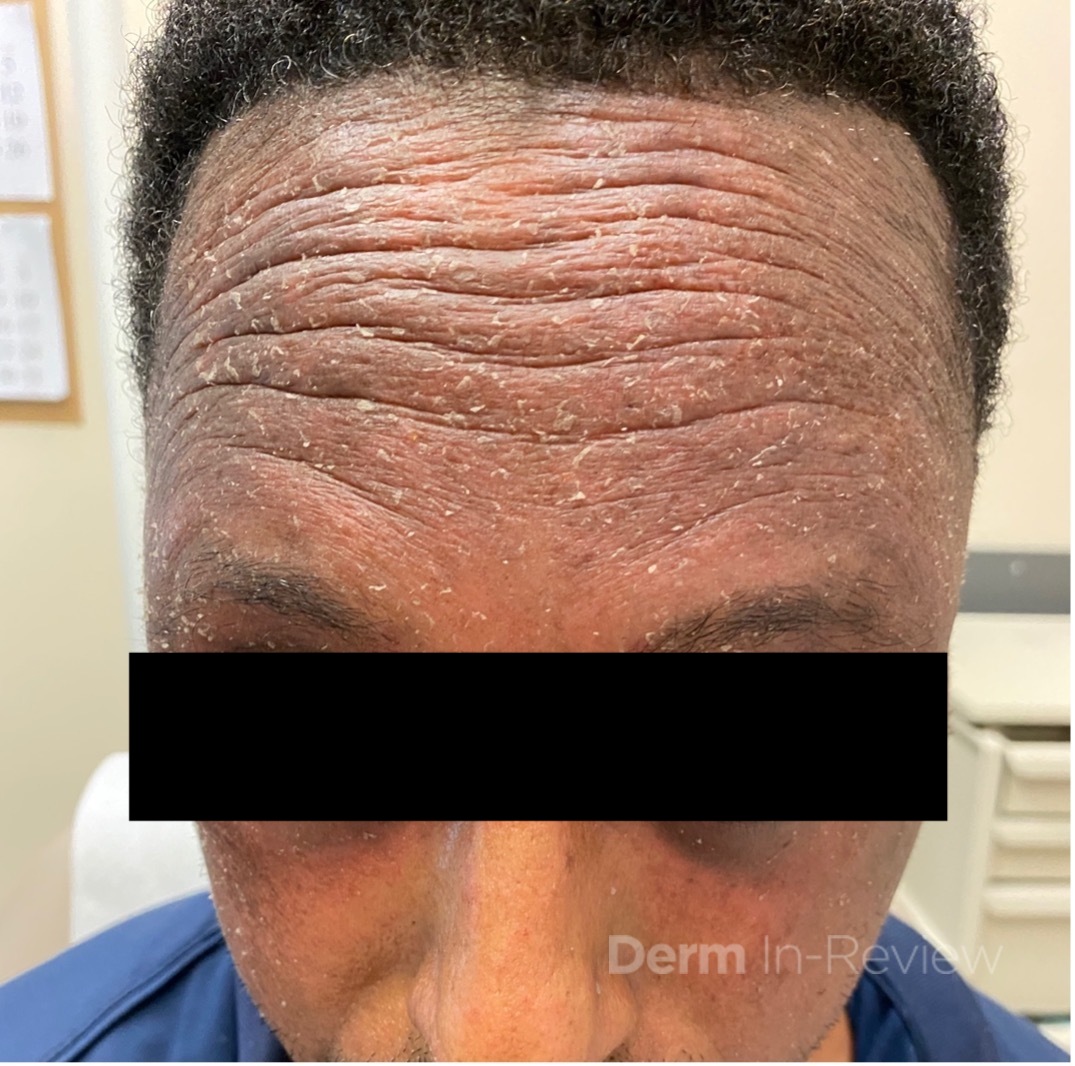August 2022 Case Study
by Blair Allais, MD
A 55-year-old male presented to clinic with a new worsening red, scaly rash of the forehead, temples and upper cheeks. He had tried to use over the counter hydrocortisone and witch hazel toner at home without improvement of the rash. On further questioning of possible exposures, the patient endorsed switching his home hair dye recently and used it for the second time several days prior to the development of the rash.
Which of the following cross reacts with the likely culprit allergen in this case?
A.) Aspirin
B.) Penicillin
C.) Glipizide
D.) Lidocaine
E.) Furosemide
Correct answer: C.) Glipizide
Para-phenylenediamine (PPD) dye is commonly found in many consumer products including hair dye, black henna tattoos, textiles, leather, fur, printer ink, and black rubber products.1 The majority of reactions to topical PPD are delayed-type IV hypersensitivity in nature and characterized by pruritus, erythema, and vesiculobullous eruptions that may occur on the face, scalp margins, or ears.2 Cross-sensitization to other compounds that also contain a benzene ring at the para position can occur.3 A helpful mnemonic to remember the chemicals that cross-react with PPD can be found in Chapter 2 of the Derm-In-Review Text: “AA SSTEPP”, which stands for Azo, Aniline dyes, Sulfonamides, Sulfonylurea, Thiazides, Esters (benzocaine), Procainamide, PABA and PABA esters.
Glipizide is a sulfonylurea and cross reacts with PPD. The other answer choices are distractors and incorrect. Para-aminosalicylic acid (an anti-tuberculosis medication) is a cross reactor to PPD dye, and one should not confuse para-aminosalicylic acid with aspirin (acetyl salicylic acid). While sulfonamides cross react with PPD, other antibiotics such as penicillin do not. While ester anesthetics (procaine, chlorprocaine and tetracaine) cross react with PPD, amide antibiotics such as lidocaine do not. While thiazide diuretics (hydrochlorothiazide, chlorthalidone) cross react with PPD, loop diuretics such as furosemide do not.
References
- Rietschel RL, Fowler JF. Fishers Contact Dermatitis, 4th edn. Baltimore, MD: Williams and Wilkins, 1995.
- Mukkanna KS, Stone NM, Ingram JR. Para-phenylenediamine allergy: current perspectives on diagnosis and management. J Asthma Allergy. 2017;10:9-15. Published 2017 Jan 18. doi:10.2147/JAA.S90265
- McFadden JP, Yeo L, White JL. Clinical and experimental aspects of allergic contact dermatitis to para-phenylenediamine. Clin Dermatol. 2011;29(3):316-324. doi:10.1016/j.clindermatol.2010.11.011


